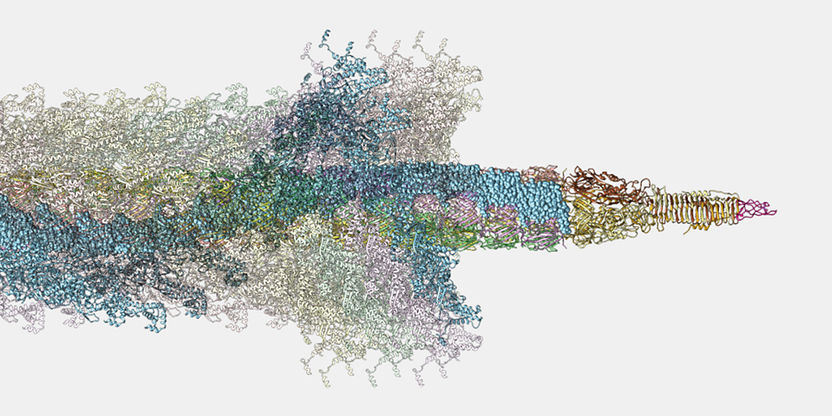Two new ways to fluorinated structures
Chemo-enzymatic synthesis of fluorinated antibiotics
Fluorinated structures make up more than 20 percent of modern drugs, but benign and fast Fluorination schemes are scarce. In a study scientists have now combined dynamic kinetic resolution and nucleophilic fluorination for the asymmetric synthesis of florfenicol, a veterinary antibiotic. After enzymatic resolution of the racemate, two different fluorination strategies both proved effective and fast. One is especially interesting for industrial production.

© Wiley-VCH
Fluorine substituents have many welcomed effects in drugs. Often, fluorinated compounds are more lipophilic, penetrate more easily in the cells, and enzymes may find it harder to degrade them. For example, the fluorinated antibiotic florfenicol is more active than thiamphenicol, to which it is related by a terminal fluorine instead of a hydroxy group. Florfenicol and thiamphenicol, which are both variants of chloramphenicol, are used against conjunctivitis and respiratory diseases in cattle.
Despite the relevance of fluorination, many industrial fluorination strategies still involve aggressive and harmful reagents. In the case of florfenicol, not only is the fluorinating agent expensive and corrosive, but the preparation of the two stereocenters also produces a high amount of waste. These issues prompted Fuli Zhang from China State Institute of Pharmaceutical Industry, Shanghai, China, and his colleagues, to look for more environmentally benign processes. To synthesize florfenicol, they had to construct two adjacent stereocenters of the cis-1,2-amino alcohol and introduce a terminal fluorine atom.
The scientists chose to install the fluorine as a last, separate step because the two asymmetric carbon atoms can be conveniently prepared by dynamic kinetic resolution. Kinetic resolution means that two enantiomers can be separated according to their different reactivity. The process is called “dynamic” when the two enantiomers can racemize, that is, interconvert. Then, the faster reacting enantiomer can be isolated with maximal yield.
Zhang and his colleagues designed a dynamic reductive kinetic resolution using ketoreductase enzymes as biocatalysts and glucose as the hydride source. Having established the two stereocenters by this bioenzymatic route, they explored possible fluorination reactions. Two routes of nucleophilic fluorination proved especially convincing, and both routes use amine hydrofluoride as the fluorinating reagent, which is mild and selective and can be handled in glass equipment.
For industrial manufacture, the authors also have a favorite. The route involving a cyclic sulfate intermediate outcompeted the other one containing an intermediate aziridine, a three-membered nitrogen-containing ring. The chemo-enzymatic sulfate route produced florfenicol in only five steps and showed high yield and flexibility as well as acceptable environmental and health safety. The next step will be the further exploration of the reductase enzymes in other dynamic bioreduction syntheses, the authors remark.
Original publication
Most read news
Original publication
Jie Zou, Guowei Ni, Jiawei Tang, Jun Yu, Luobin Jiang, Dianwen Ju, Fuli Zhang, Shaoxin Chen; "Asymmetric Synthesis of Florfenicol by Dynamic Reductive Kinetic Resolution with Ketoreductases"; EurJOC; 2018
Topics
Organizations
Other news from the department science

Get the life science industry in your inbox
By submitting this form you agree that LUMITOS AG will send you the newsletter(s) selected above by email. Your data will not be passed on to third parties. Your data will be stored and processed in accordance with our data protection regulations. LUMITOS may contact you by email for the purpose of advertising or market and opinion surveys. You can revoke your consent at any time without giving reasons to LUMITOS AG, Ernst-Augustin-Str. 2, 12489 Berlin, Germany or by e-mail at revoke@lumitos.com with effect for the future. In addition, each email contains a link to unsubscribe from the corresponding newsletter.
Most read news
More news from our other portals
Last viewed contents

New technique could increase success rate, life span of implantable devices
Common blood test could predict risk of recurrent stroke

Light regulates structural conversion of chiral molecules - The conversion is relevant e.g. for the preparation of drugs






















































